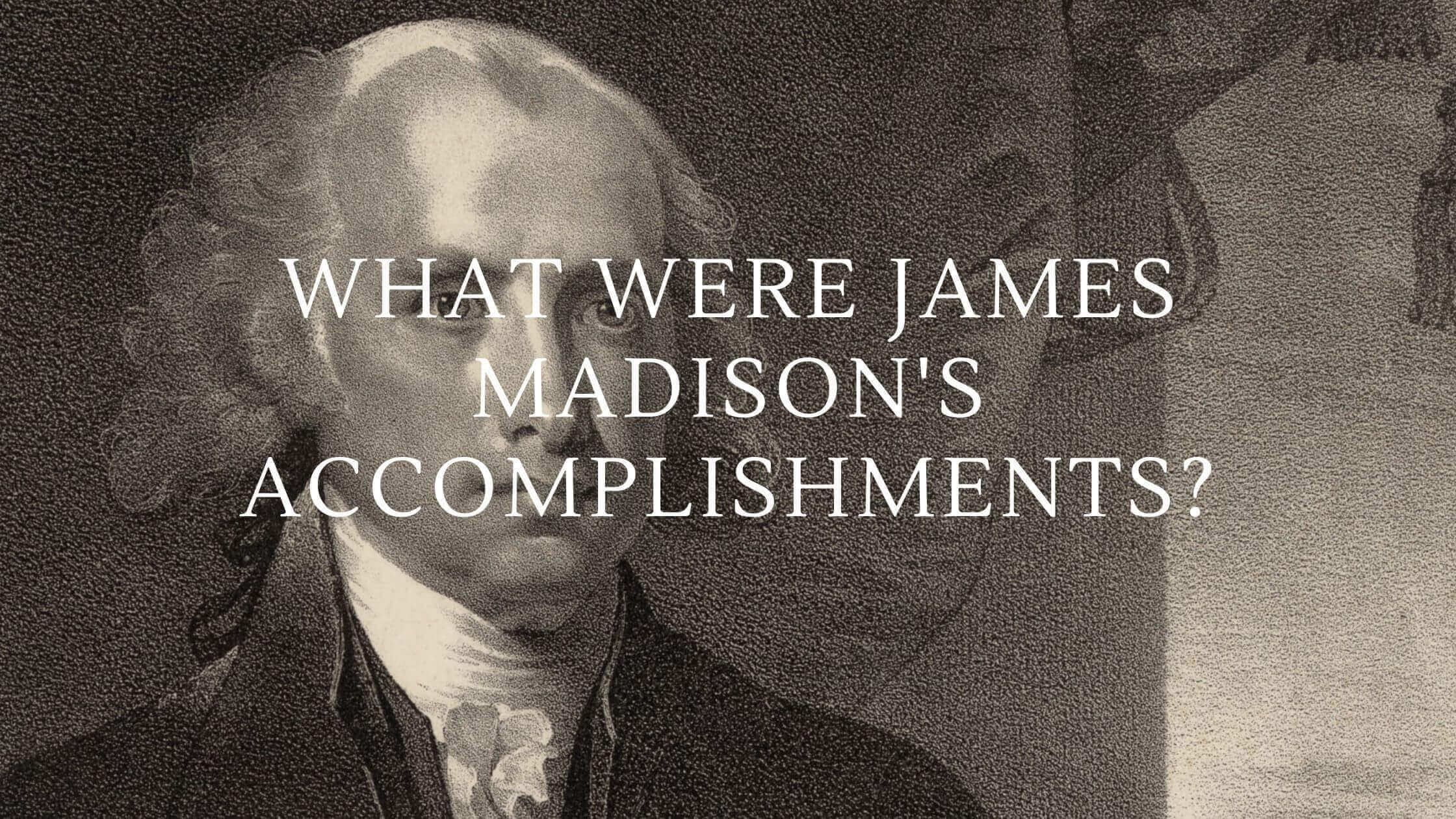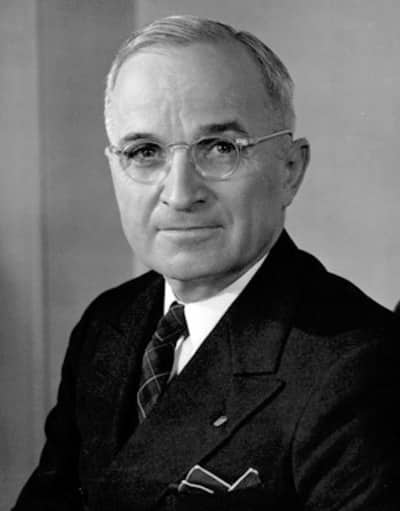Table of Contents
ToggleWhat is James Madison Best Known for?
President James Madison (1751-1836) was an American founding father, president, philosopher, and expansionist. He is known as the ‘Father of the Constitution’ and the Bill of Rights.
As secretary of state, he helped negotiate the Louisiana Purchase, which doubled the size of the United States. When president, he pushed for and led the country during the war of 1812, which reasserted America’s independence even though it was an inconclusive war.
Madison’s Work on the Constitution
Even in his own time, James Madison was known as the father of the constitution, and he still is. No one else did more to determine the constitution’s ideas, purpose, and limitations than Madison.
People discussed the constitution for years before it existed, and Madison contributed to many discussions. Madison wrote many of the Federalist Papers (a very important series of political essays, which he wrote along with John Jay and Alexander Hamilton) in which he argued for the constitution. The constitution was intended to amend and replace the earlier Articles of Confederation.
Madison Learned From His Work on the Virginia Constitution
Madison helped develop Virginia’s constitution and wanted a legally binding constitution for the whole country. Much later, enough people interested in a national constitution got together at a constitutional convention. In 1787, people finalized and signed the constitution.
Madison contributed more to the federal convention of 1787 than any other speaker. While he did not write the constitution himself, he did have more influence than anyone. He spoke more than 200 times during the convention, and much of what we know about the convention comes from his detailed records.
The Constitution Was Put to a Vote
When the constitution was first signed, it did not yet have any legal power. Two-thirds of the 13 states would have to approve of the constitution to make it law.
The constitution was sent to each of the 13 states, 9 of which would have to vote for it. On June 21, 1788, New Hampshire was the last of the nine states that voted in favor of the constitution. The constitution became law.
Madison and the Bill of Rights
As well as the ‘Father of the Constitution’, James Madison is considered the ‘Father of the Bill of Rights’. Madison was originally against a Bill of Rights but learned more about the idea during debates about the constitution.

He realized that the constitution needed to put clear limits on the federal government’s power. Madison understood that it needed to be clear where the federal government’s power ended and the power of states began.
Madison was strongly in favor of individual rights, and his amendments focused on these issues. He argued for freedom of speech, religion, and separation of church and state. The constitution would have been very different without James Madison’s contributions.
Madison Wanted to Protect Individual Liberty
Madison saw the Bill of Rights as necessary to defend what Americans fought for during the American Revolution. If Americans fought for freedom from an oppressive British government, their own government should not become oppressive in the future.
On June 8, 1789, James Madison formally proposed the Bill of Rights to the house of representatives. Congress approved the idea, but it took months for people to agree on a complete bill of rights to send to the states.
Madison wrote 19 amendments to the constitution and passed 12 of them on for potential approval. By 1791, 10 of his amendments had passed and became part of the constitution.
Some of the Most Famous Parts of the Constitution are in the Bill of Rights
Madison wanted to use the bill of rights to limit the powers of states and the federal government. No individual state was allowed to turn against trial by jury or the freedom of the press. However, this part of the Bill of Rights did not pass. A modified form of the bill succeeded – the number of amendments was reduced to 12, and only 10 of those passed.
The right to free speech/assembly and the right to bear arms are parts of the Bill of Rights. The bill also protects people’s private property from unreasonable government actions, guarantees the right to a fair trial, and prohibits cruel and unusual punishment. The Bill of Rights includes some of the constitution’s best-known and most cherished parts.
Madison Drafted the Virginia Plan
People disagreed on whether or not states should have equal power in the house of representatives. Some people argued that each state should only have one vote regardless of the population; others that a state with twice the population should have twice the voting power.
Madison’s solution to this problem was to create a house of representatives (where votes were based on population) and a senate (where each state gets only one vote). This was known as the Virginia Plan.
Madison Helped Structure the American Government
The Virginia Plan also helped define the structure of the American government and solved conflicts between states’ rights and the federal government’s rights.
While the Virginia Plan was changed significantly before it passed, James Madison still defined the different parts of the American government. The Virginia Plan split the government into executive, legislative, and judicial branches.
Madison Helped Pass the Religious Freedom Act
Madison was always in favor of religious freedom. In his youth, he was angered by the sight of several baptist preachers being locked in jail only for promoting their religious beliefs. Belief in religious freedom was important to him for his whole life.
When the state of Virginia created its own constitution in 1776, Madison was impressed that it contained a section about religious liberty. He wanted to extend religious liberty to the whole country.
Madison didn’t like using the word “tolerance” when talking about religious freedom. “Tolerance” implied grudging acceptance, not that religious freedom was a right that the government should not be allowed to take away. Madison eventually got religious freedom added to the constitution, preventing people from making laws against it anywhere in the country.
Madison Greatly Expanded American Territory
Madison added many territories to the United States as president and argued for territorial expansion before that as secretary of state. American history could have been very different – the United States could have been a much smaller country if other powers had expanded more quickly.
Madison and the Louisiana Purchase
When Madison was secretary of state under President Jefferson, he helped negotiate the Louisiana Purchase. Before 1803, a large amount of territory to the west of the United States was under French control. If Americans could acquire it, that would double the size of the United States.

France disliked the idea of eventually losing most or all of its American territory, and Napolean was against giving up Louisiana. However, France’s defeat during the Haitian revolution and the likelihood of renewed war with Britain convinced France to discuss selling the territory.
James Madison Helped Convince Congress to Pay for It
Americans met with French representatives that were willing to sell the enormous territory. James Madison and President Jefferson convinced Congress to buy the territory, which included parts of what are now fifteen states.
In its first decades, many people doubted the United States and thought it would never have any territory on the other side of the Mississippi River. The Louisiana Purchase disproved this and made people believe that the United States would eventually reach the west coast.
Madison Annexed East and West Florida
Before the war of 1812, President James Madison annexed East and West Florida. Many American settlers moved into the region at the beginning of the 19th century, and Spanish rule was weak.
This was the beginning of an aggressive expansionist policy that continued until the westward expansion in the second half of the 19th century and Pacific colonization later.
Madison Led the Country in the War of 1812
James Madison was elected as the 4th president in 1808 and again in 1812. He had always favored another war with Great Britain, and as president, he had the opportunity to lead this war. This was a controversial part of his life because some argue that the war achieved nothing.

Get Smarter on US News, History, and the Constitution
Join the thousands of fellow patriots who rely on our 5-minute newsletter to stay informed on the key events and trends that shaped our nation's past and continue to shape its present.
After the revolutionary war, Britain and the United States remained enemies for a long time. The British continued to seize American shipping, and Madison wanted to stop this aggression. Protests and a trade embargo did not end the attacks.
The War Was Motivated by British Attacks
Madison’s goal was to force the British to stop their attacks, end the impressment of American sailors into the British navy, and end severe trade restrictions.
The Federalist Party was against the war. They saw it as unnecessary and for the sake of advancing republican political interests. Federalists also disagreed with how the war was fought.
Nonetheless, the United States went to war. Congress voted 79-49 in favor of it; people felt they had to stand up to Britain even if it was dangerous. Since Britain was at war with Napolean’s France, Americans believed they could win, possibly even capturing southern Canada.
The War Was Difficult for the United States
The United States was rather unprepared for and did not always fight effectively in the war. Militias were unwilling to leave their states to fight, and Americans were wrong to assume that Canadians would see the war as an opportunity to revolt against Britain.
While American forces outnumbered British forces, encounters with the British were often disastrous. There were impressive victories, such as the battle of New Orleans, but the British were able to burn down the White House and many other buildings in Washington.
Americans Saw the War as a Victory
Eventually, both sides were sick of the war and were willing to sign a treaty that left things the same as they were before the war. The American victory at New Orleans and the British victory against France left both sides willing to end the war without feeling defeated.

Did the war achieve anything? While the war did not go as well as James Madison wanted it to, people saw it as a victory. At the time, many people in Europe did not believe the United States was here to stay – it would break up or be conquered by European powers. The war showed that Americans would fight to keep their country together.
Madison Led the Country to Peace and Prosperity After the War
After the war, the USA entered a time of prosperity and progress known as the era of good feelings. After establishing that the United States could defend itself even at sea, the people set to work developing the nation. This was the beginning of industrialization, with factories and new technology rapidly appearing in the United States and many other countries.
The Federalist Party ceased to be relevant after the war. Since the war was popular after it ended, federalists were seen as defeatists and cowardly for opposing it. The republican ideas that James Madison and Thomas Jefferson believed in prevailed over federalist ideas.
Madison Changed His Mind and Restored the National Bank
Madison changed his mind on whether or not to have a national bank during this time. He wanted to undo some of Hamilton’s policies and initially let the charter for the national bank expire.
However, the war of 1812 proved that you needed a national bank to finance a war, so Madison restored the national bank. While James Madison had many strong principles that he stuck to for his whole life, he could also change his mind and compromise.
Madison’s Work After the Presidency
Madison left office in 1817 and lived on his tobacco plantation in Virginia. After retirement, he continued to influence the country, serving as an advisor to President Andrew Jackson. Madison publicly argued that no state had the right to secede from the union.
Thomas Jefferson and James Madison established the University of Virginia. He served as a senior official at that university for a decade until his death.
When he was 78, Madison went to the Virginia Constitutional Convention to improve the state’s constitution, which was the last significant part of his career. In his eighties, he had financial problems and became sick with anxiety. Madison died suddenly at the age of 85, outliving other important revolutionary war figures.
In summary:
- James Madison was an American founding father and the 4th president
- Known as the “Father of the Constitution” and the Bill of Rights
- Negotiated the Louisiana Purchase as secretary of state
- Led the country during the War of 1812
- Contributed heavily to the Federalist Papers and the constitutional convention of 1787
- Argued for individual rights (speech, religion, etc.) in the Bill of Rights
- Created the Virginia Plan for government structure
- Passed the Religious Freedom Act
- Greatly expanded American territory
- Advised President Andrew Jackson and served as a senior official at UVA
- Argued against the state’s right to secede from the union
- He died at age 85, outliving other revolutionary war figures.











